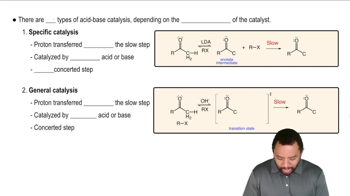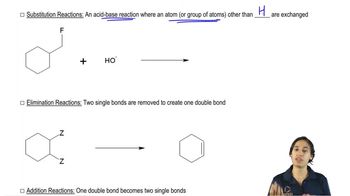Give the products, if any, of each of the following reactions:
a. benzonitrile + methyl chloride + AlCl3
b. phenol + Br2
 Verified step by step guidance
Verified step by step guidance Verified video answer for a similar problem:
Verified video answer for a similar problem:



 4:29m
4:29mMaster Activity and Directing Effects with a bite sized video explanation from Johnny
Start learning